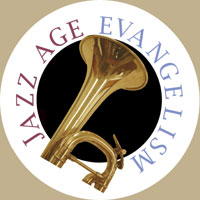

|
Read
more on
|
By 1921, Paul Rader had already been pastor of Moody Church in Chicago for seven years. They were years of vigorous urban evangelistic activity. At the same time he had become president of the Christian and Missionary Alliance (C&MA) denomination and was frequently away on preaching tours. The board of Moody Church began to fear that their church, proudly independent, was becoming a C&MA congregation. Rader's brashness and determination alienated some just as it drew others to him, and his frequent absences caused muttering. After meeting with the board, Rader resigned his pastorate at Moody and began to plan an independent ministry.
His first plan was to hold a summer-long series of meetings in New York City and he ordered a pre-formatted steel structure that could quickly be put up in a vacant lot to house the campaign. But plans in New York fell through and Rader planned a summer campaign in Chicago instead, where Barry and Halstead and Clark Streets met. The Big Steel Tent was hyped by radio and handbills and drew capacity crowds of over four thousand. At the end of the summer, the decision to continue the Tent as a permanent Tabernacle was easy to make. Rader was determined that there would be no ecclesiastical structure to hinder his work. (In 1923, the C&MA required him essentially to choose between the Tabernacle and the Alliance. After some vacillation, he chose the Tabernacle and resigned as president of the denomination.) The Tabernacle would have no members, no church governing board, and would report to no denominational hierarchy. Sunday services would be held in the afternoon so that people could go to their church services and then attend the Tabernacle. Rader had formed the Gospel Missionary Association to be the legal face of his ministry, of which the Tabernacle was the most public part. His principal financial supporter was and continued to be for the next decade businessman Albert M. Johnson, whose wife had come to know Christ through Rader's preaching at Moody Church.
By September 1922 the first services were held in the newly re-christened Chicago Gospel Tabernacle.back
to main Birth of the Tabernacle page
go on to main Preacher page